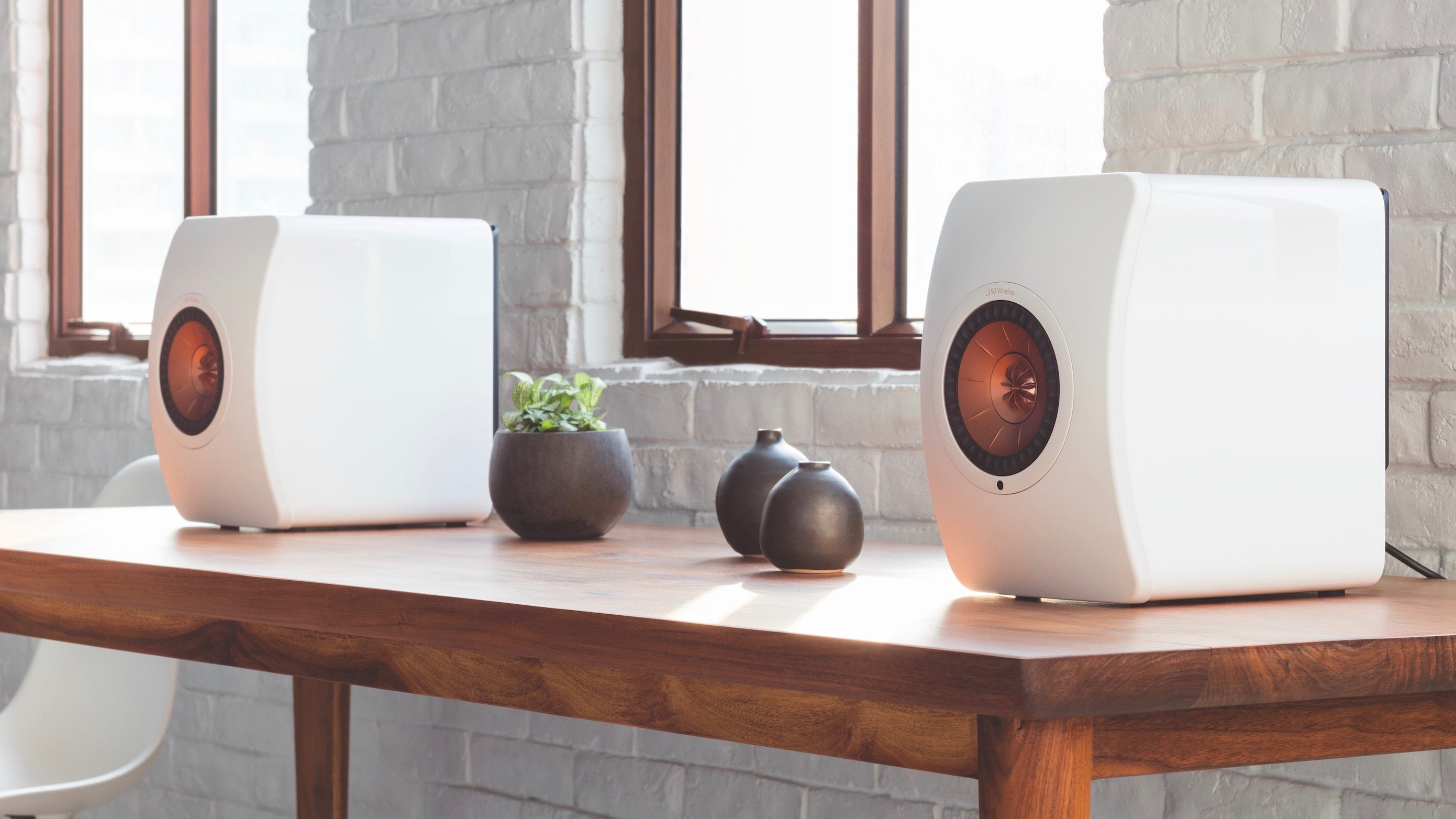KEF LS50 Wireless Review
KEF LS50 Wireless
The ultimate meeting of hi-fi and convenience
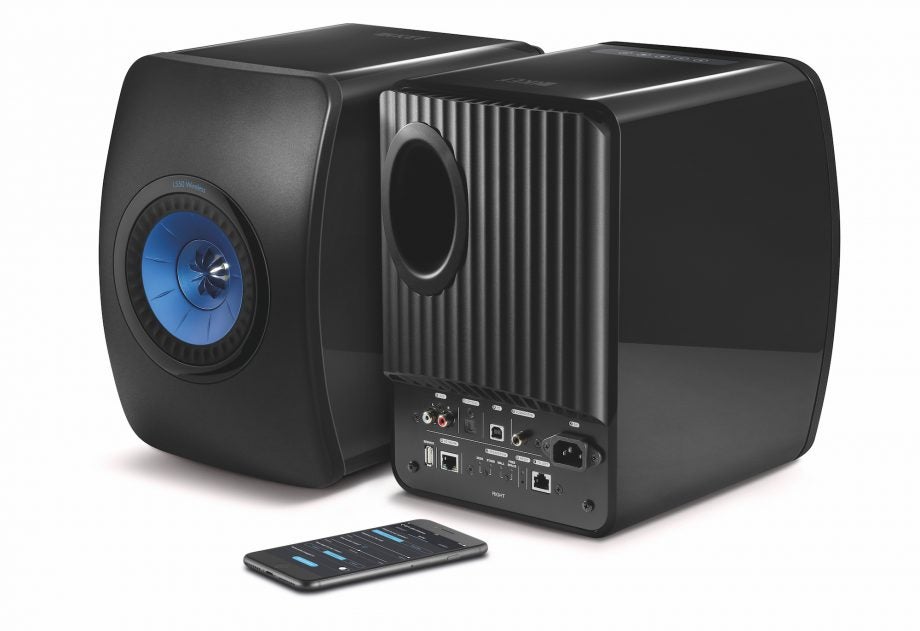
Verdict
Pros
- Outstanding sound
- Great choice of inputs
- Easy and flexible to set up and use
- Neat design
Cons
- App isn't as responsive as it could be
- Can't control physical inputs via the app
Key Specifications
- Review Price: £1999
- Fully active speakers
- Built-in streaming preamp
- Tidal, Spotify and aptX Bluetooth support
- 25mm tweeter/13cm mid-bass driver
- 1 x aux, 1 x USB (type B), 1 x optical
- Inputs support up to 24-bit/192kHz (96kHz for optical)
What is the KEF LS50 Wireless?
The LS50 Wireless is an active stereo speaker system, offering all the plug-and-play convenience of a Bluetooth speaker alongside the high-end audio capabilities of proper hi-fi separates.
It’s based on the KEF’s popular LS50 passive speakers, but builds an amplifier, streaming pre-amp, top-quality DAC and a whole suite of digital and analogue inputs into a design that’s only a few centimetres bigger than its muse.
The Wireless moniker refers to the speakers’ capabilities rather than their physical attributes. There are still three main wires to deal with: a power cable for each speaker and a cable that connects the two together.
Still, that’s far fewer than what a system of separates would require to do the same job. In fact, for all this compact setup offers, you’ll really start to question the need for anything more.
Related: Best multiroom speakers
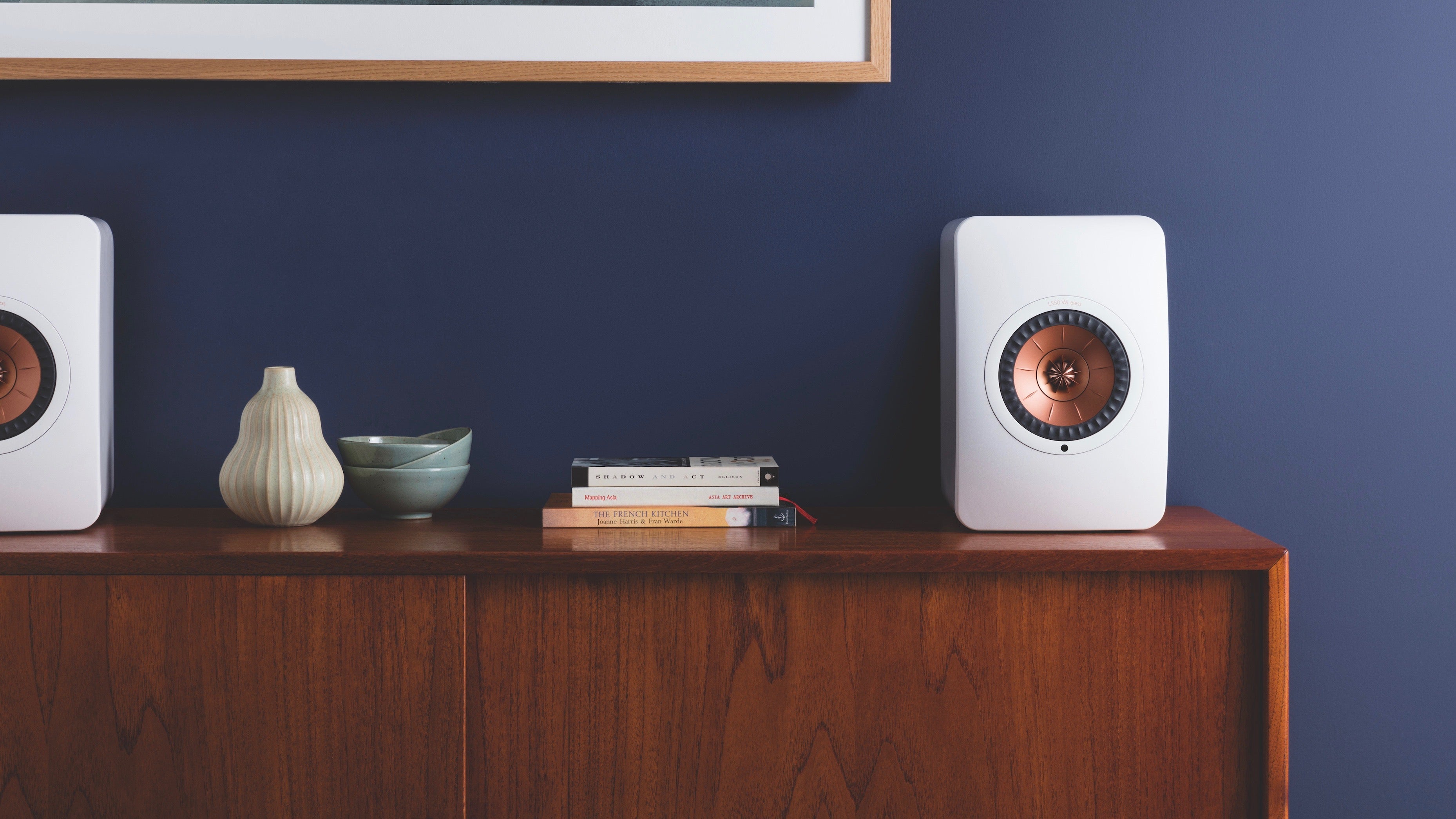
KEF LS50 Wireless – Design and build
The KEF LS50 Wireless are a seriously good-looking, well-built pair of bookshelf speakers. They’re available in a choice of titanium, black gloss or white gloss, with KEF’s statement Uni-Q driver at their heart.
Not only does the Uni-Q driver look attractive in either red, blue or bronze respectively, it also holds the key to a considerable chunk of the LS50 Wireless’ talent, by mounting the 25mm aluminium dome tweeter into the centre of the 13cm mid/bass unit.
This aims to improve the directionality and timing between the drivers, ultimately making for tighter stereo imaging across a wider listening area. Bye-bye, sweet spot.
The two speakers work in a master-slave setup, with the right-hand speaker holding the choice of physical inputs along its rear, plus a handful of light-up touch-sensitive control buttons on its top panel for power, volume, source and Bluetooth. There are also some positioning controls on the back, although these are better tweaked in the speakers’ control app.
Inputs include aux, optical and USB (Type B), plus a subwoofer out and an Ethernet port for hardwiring if you’d rather not use Wi-Fi.
The LS50 Wireless come with a small remote for controlling all of these functions from your listening position – but, strangely, don’t offer a way to determine which source is selected from the same spot; it’s a single button that cycles through them all.
This means to get to the source you need, it’s often a case of pressing play and scrolling through them until you hear your music – which for a product that’s so polished in almost every other regard is something of an oversight.
Still, it’s a very small fly in an otherwise hugely effective ointment, and I’d learned the order of inputs following only a few days of testing.
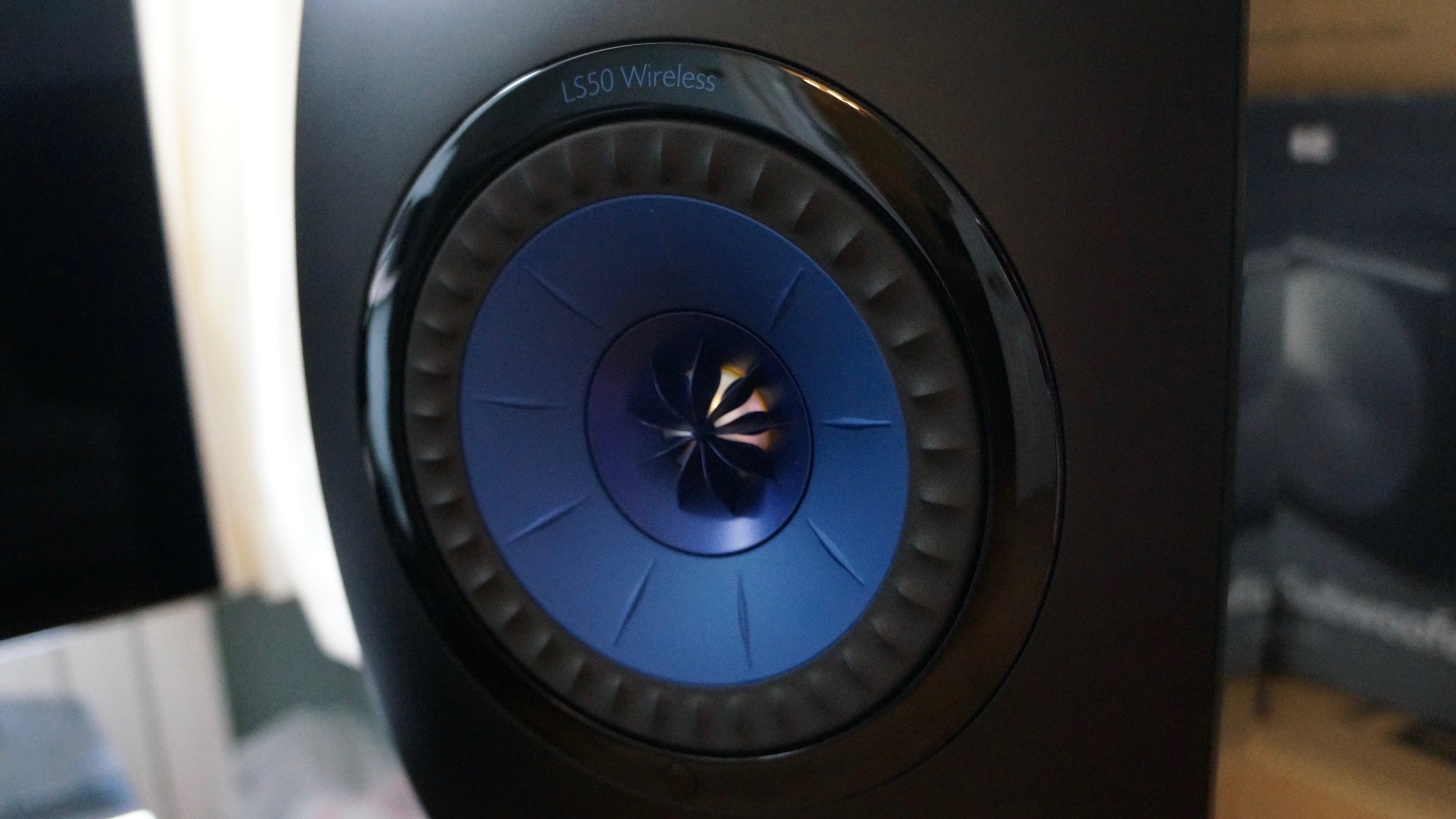
KEF LS50 Wireless – Features
As I’ve hinted at already, the LS50 Wireless is a hugely capable pair of active speakers and a look under the hood provides an insight into just how much has been squeezed into them.
These are true active speakers, rather than powered, which means that each drive unit in each speaker has its own dedicated power amp. There’s a 30W Class A/B amp on hand for the tweeter, and a 200W Class D module in charge of the mid/bass unit.
There’s also a dedicated DAC (up to 24-bit/192kHz for all channels except optical, which is capped at 96kHz) and DSP for each channel too, plus a streaming preamplifier to allow the speakers to playback music wirelessly.
This supports aptX Bluetooth and streaming from connected drives, plus has Tidal built into its app and support for Spotify Connect too.
Considering the LS50 Wireless keeps the core speaker design unchanged, it’s quite a feat that the engineers have squeezed all of the above into a box only 3cm deeper than the passive design.
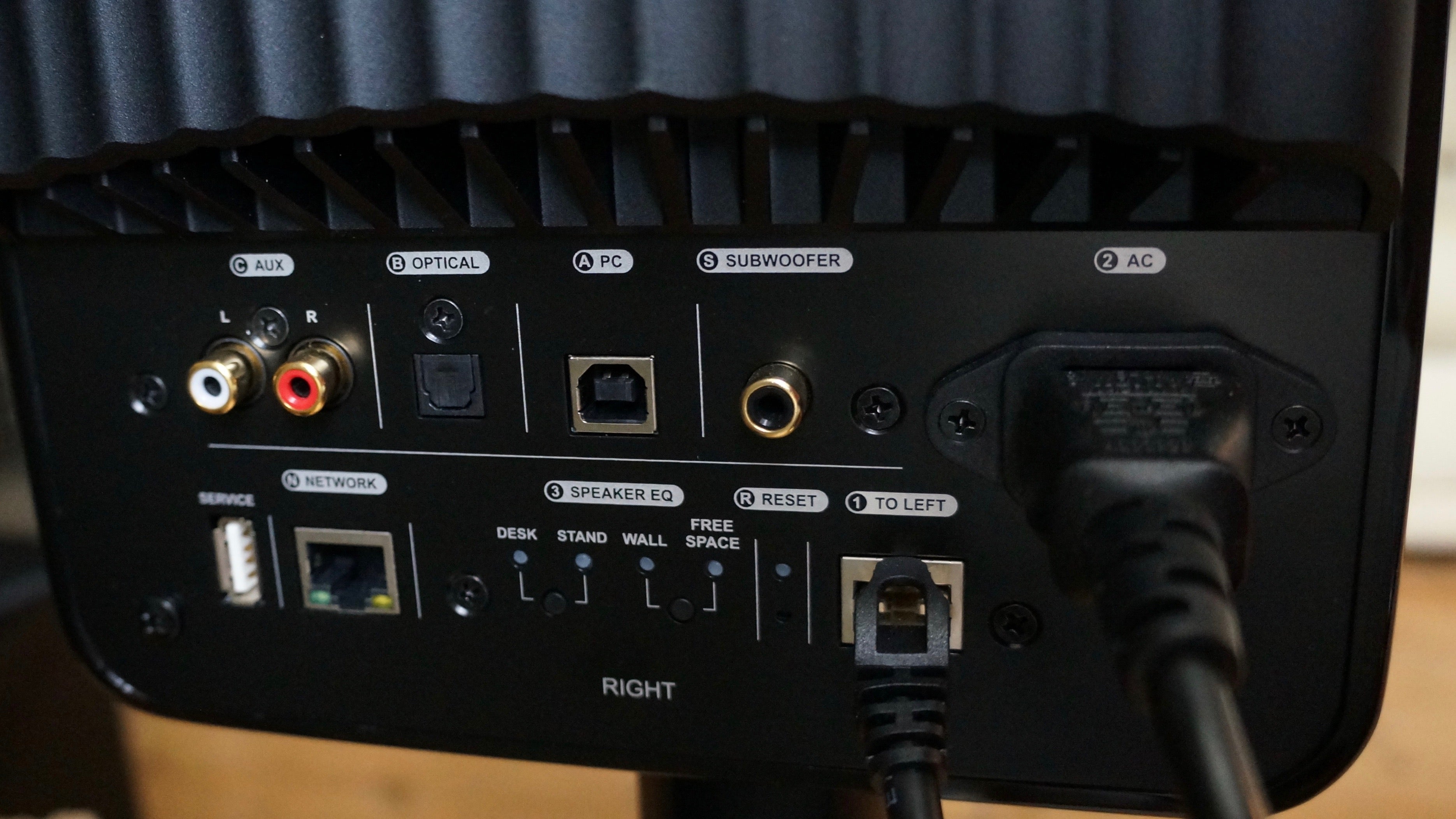
KEF LS50 Wireless – Setup
Much of the beauty of the KEF LS50 Wireless lies in the system’s simplicity. Once you’ve connected both speakers to your mains, and then to each other, it’s a case of downloading the KEF LS50 Wireless app (iOS/Android) and following the instructions to get it all onto your network (or hardwiring via Ethernet, if you prefer).
Once discoverable in the app, you can then tap into the speakers to tailor their sound to your room and tastes – but even this is kept accessible to ensure it’s nice and easy to use.
That’s because there are both basic and expert options of the controls that offer largely the same changes, but are just worded differently for different audiences.
For example, in the basic section of the menu, the app will ask you the size of your room and what it’s like (damped, moderate or lively), which translates in the expert menu into bass extension and treble trim. Tweak on either side of the menu and it will change the details in the other.
There are also options for whether your speakers are on a desk or stand (KEF’s Performance stands are a superb pairing, if you have space in your budget) and their distance from a wall, which will tweak the DSP even further.
There are a few extra things to play around with in the expert side, however, including a phase-correction switch and extra controls for connecting an external subwoofer.
The phase-correction switch enables the LS50 Wireless to further compensate for the inherent time delay caused within any crossover. It works with the Uni-Q driver, which helps to keep this in check elsewhere, theoretically offering perfect time-alignment across the audio range.
Experimenting with it is good fun. Switch it on and you’ll hear a subtle-but-noticeable widening of the soundstage, plus a feeling that the sound has been ‘tightened up’ across the board.
You’ll hear more snap in the mids and a touch more bite in the treble, plus a more authoritative, confident overall sound. To an audiophile, it will make all the difference to the experience, but even a less critical ear will hear the benefit from switching it on.
Once you have your speaker settings just so, and have connected your physical sources, you can also use the app to log in to Tidal, or click through to control Spotify directly using Spotify Connect. You can search for connected drives on your network or play back music stored locally on your device too.
While these streamed sources can all be browsed and controlled via the app, physical sources will require you to use the remote or touch controls to switch between them. Again, this feels like something of an oversight, and is something that I hope can be resolved in a future app update for a more harmonious experience.
The app could do with a little bit of work when it comes to performance too. While well laid out and simple to use, it isn’t always the most responsive, particularly the sliding volume control, which I found could be rather temperamental.
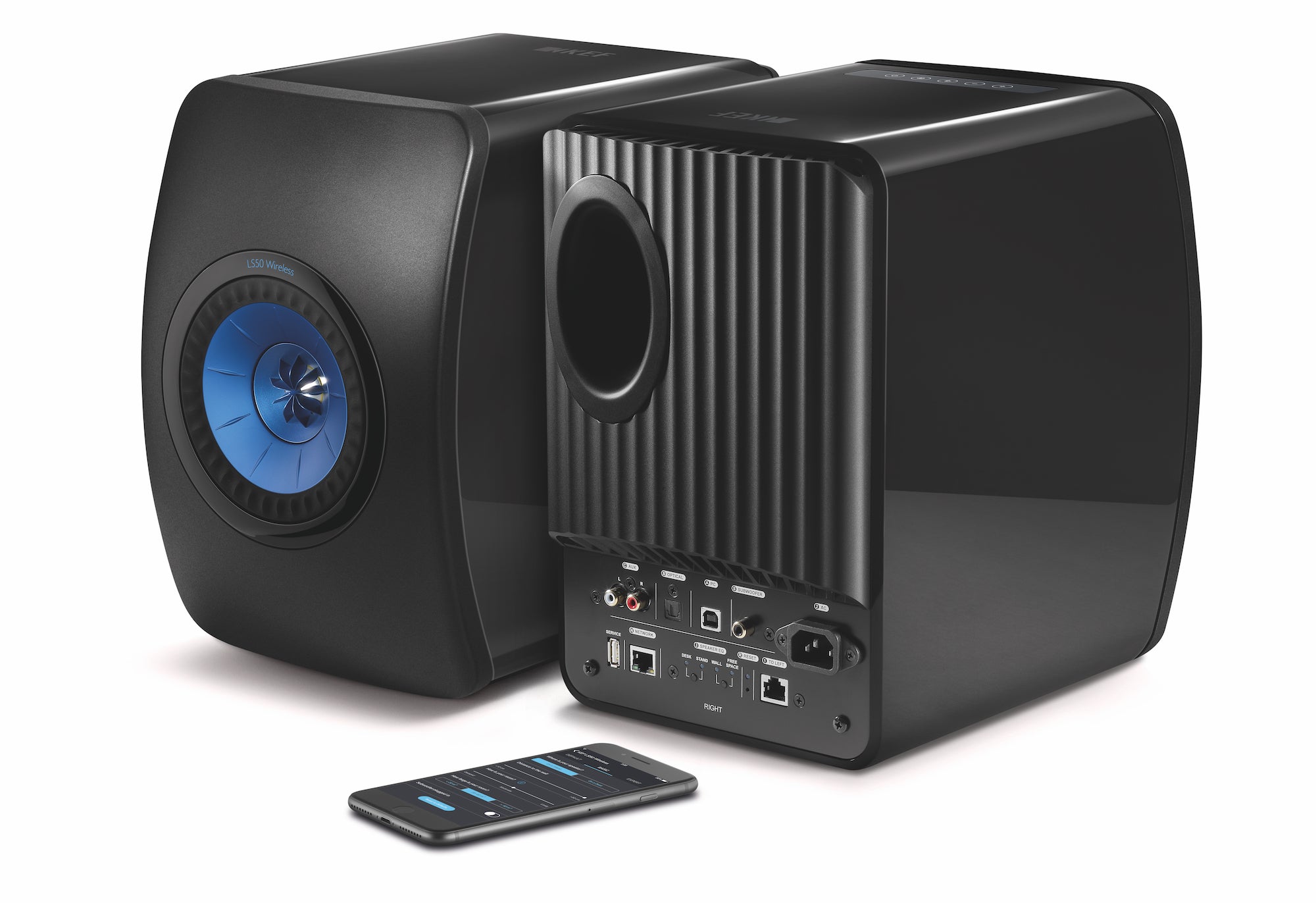
KEF LS50 Wireless – Performance
And so to how this system actually sounds, which is where the beauty lies. Take a bit of time to tweak the sound to your room and taste, and this system will shine.
Put simply, for the £2000 you’ll pay for this ‘all-in-one’ setup, you’ll only get better by spending the same on hi-fi separates. The electronics and circuitry is so tailored to work perfectly with one another that the sound is spot-on – even pairing the LS50 passive speakers with a talented amplifier up to the same price can’t top it.
I played around with positioning, and the good news is that you can largely do what works for your taste or room, thanks to the app’s ability to tweak the DSP. However, I found that giving them a little more space from the back wall than my initial placement added a touch more clarity than was possible through DSP adjustments.
I loaded up a playlist on Tidal to see how the LS50 Wireless would fare with the most convenient form of music. The result was an absolute triumph. Even over my wireless network, the sound produced was confident, full of detail and laser-focused in its stereo imaging.
Feed it something upbeat and it won’t miss a step, jumping into a lively and dynamic presentation without second thought. Opt for something more considered and it’s equally able to change tack at the drop of a hat, and slow things down without sounding held back or bored.

Precision is superb. Instruments sound as they would do played right in front of you, and tie in perfectly with one another, layering themselves in a way that allows you to enjoy the harmony of the performance as well as pick out fine details of individual elements should you wish.
It’s a bit of a cliché, but if you’re new to a setup of this calibre, you really will discover parts of your favourite songs you’d never heard before.
The expression that comes through in the vocals of a live performance is enough to give you the goosebumps. That’s helped by the fantastic timing the LS50 Wireless is capable of, combined with a superb sense of rhythmic drive that keeps you listening and listening.
Stream a Hi-Res Audio track from a NAS drive, or switch to a physical source, and that sense of space, timing and detail is only made further apparent. But the pure sense of musicality these speakers are capable of remains unchanged, no matter the input. It’s only Bluetooth that shows even a glisten of fragility, but it isn’t offputting in the slightest (and is the input I found I used the least anyway).
The soundstage is impressive for what are relatively compact bookshelf speakers, and they manage to fill my medium-sized testing room without issue. You won’t be left wanting in the scale and volume department, should you want to push either – I turned up the volume higher than I can imagine most people would listen at, and didn’t come across an ounce of distortion.
As far as balance is concerned these speakers are pretty neutral, with fantastic clarity and focus through the mid-range, a rich but controlled bass, and a clear and open treble with just enough bite to keep things exciting without being bright. It’s a really well-considered balance, and one that works well with all genres of music.
Bass lovers can get some extra oomph in the low-end from hooking up a separate sub, but I like the balance as it is – there’s still plenty of rumble here to make my floorboards vibrate with a play through of James Blake’s Limit to Your Love.
Why buy the KEF LS50 Wireless?
If you have a £2000 budget for a proper hi-fi setup, you can be confident you won’t get better when it comes to package or performance than the KEF LS50 Wireless.
When it comes to inputs, the flexibility on offer is second-to-none. Plus the harmonious sound of its components all working together produce a performance so good that it has to be heard to be appreciated.
The system is also convenient, and both simple to use and set up, being accessible enough for hi-fi newbies to get to grips with, without alienating the more experienced listeners in the process.
Are there improvements that could be made? Very small ones, perhaps, which are mostly to do with app functionality. But not only are these niggles fixable, they’re also likely to fade into insignificance when you start listening.
It’s fair to say that spending £2000 on a hi-fi system is a pretty sizeable investment, but this is one that will confidently stand the test of time. If you’re looking for something similar in form and convenience but for far less money and not the same class of performance, maybe look at something like the Wharfedale Diamond A1 or the tiny Ruark Audio MR1 Mk2.
Considering the list of superlatives you can easily apply to the LS50 Wireless, though, to say that it comes highly recommended almost seems to be playing it cool.
Verdict
An outstanding active speaker system that brings hi-fi sound and plug-and-play convenience together for performance that can’t be topped.


